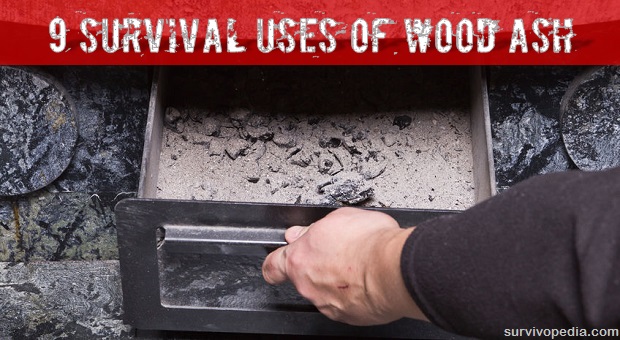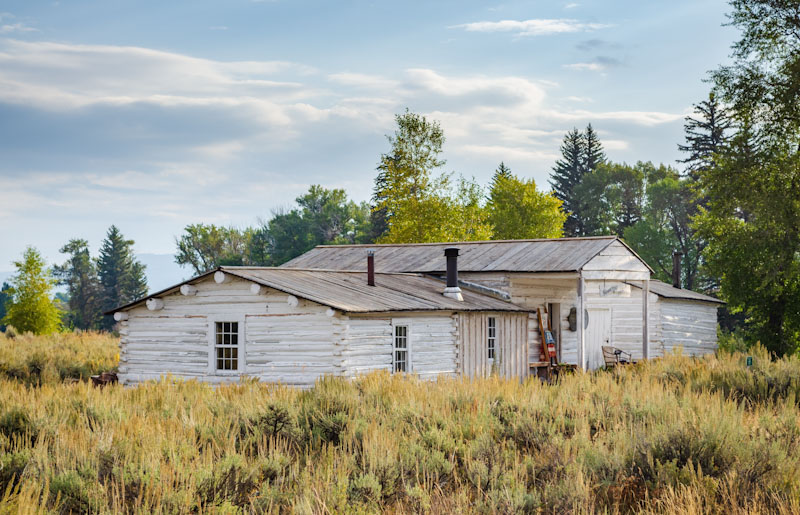If you’re going to be burning wood, you’re going to have a ton (maybe literally!) of ash by the end of the winter, so what on earth are you going to do with it all?
Re-use it, that’s what! There are a ton of uses for wood ash, and we’re going to touch on a few of those today.
Wood ash is extremely alkaline and contains potassium (potash) and calcium, which makes it great for several different purposes around the farm. It also likely contains sulfur, phosphorus, sodium, zinc, manganese, iron, copper, cobalt, magnesium and molybdenum, all of which are great for your plants depending upon your type of soil. That’s just the tip of the iceberg though. Let’s talk ash!
1. Tanning Hides
If you’ve ventured into the land of tanning at all, you probably know that brains are a common method for naturally tanning the hide into water-resistant, durable leather. However, the brains take forever to get the job done if you don’t break down the natural mucopolysaccharides, called ground substance, that protect the hide.
The Native Americans had this method down, and guess what does the trick! Yup, wood ash and water. Just soak it for 2-4 days and you’ll only have to brain-tan it once.
2. Natural Camouflage
This is kind of a no-brainer but there may come a time when you just don’t want to be seen. You may be hunting or you may be waiting for human predators to invade your space. Whatever the reason, wood ash is a quick, natural camouflage.
On a similar note, sunburn can be lethal and if you don’t have any sunscreen, rub wood ash on your skin to block the sun’s rays.
3. Enriching the Soil
{adinserter usdeception}Wood ash is great for certain types of soil, specifically soil that is overly acidic. This includes many of the sandier soils in places such as Florida. Almost without fail, alkaline-loving plants such as onions, garlic and leeks will flourish if you add a bit of wood ash to the soil around them.
The exception to this is if the pH of your soil is over 7. In that case, you may not want to use wood ash because it contains potassium and is very alkaline. It’s great to mix in if your soil is acidic but if it’s not, you’ll make matters worse.
If you decide to use wood ash in your soil, don’t apply it straight to your raw compost pile because it’ll react with the nitrogen and turn it straight to ammonia. In other words, you’ll lose that nitrogen that you’re working so hard to get. If you’re going to add ash to your compost in order to decrease the acidity (raise the pH), add it to mature, ready to use compost.
4. Wood Ash Protects Your Garden
Spread wood ash around your gardens to protect it from certain bugs that are harmful to your plants. It serves as a barrier to slugs and snails and some say that it protects against some beetles, too.
Video first seen on Wrangler Star.
5. Use Wood Ash to Do the Dishes
Tossing a bit of wood ash into your dirty skillet will produce enough lye (and friction) to get your camp skillets good and clean. Some people even use it raw as soap.
6. Give Your Chickens a Spa Day
Chickens naturally roll in dirt as a way to cleanse themselves. This protects them from insects and pests such as mites and lice. However, if your chickens can’t roam, finding a nice dusty place to roll may be a challenge for them. Mix wood ash and sand equally and place it in a litter pan or baby pool, or just dump it in a corner of their pen. The wood ash kills mites and lice and the sand keeps the ash from blowing away.
7. De-Skunk Fido
Nothing is more disgusting than the smell of a dog that’s been skunked but if you have some extra wood ash, you’re golden. Just rub the ash into his fur and it will neutralize the odor.
8. Wood Ash Makes a Beautiful Glaze
If you make your own pottery, wood ash placed on the outside makes a beautiful glaze. It’s always a surprise because the resulting color comes from the minerals in the ash. You can get anything from beautiful reds and browns to stunning greens and blues.
9. Make Soap with Wood Ash
Wood Ash mixed with water produces lye, which can then be mixed with animal fat to make soap. You simply have to add boiling soft water to your ash, allow it to sit for a few days, and drain the lye out of the mixture. You know that it’s alkaline enough to go forward with the soap-making process when an egg will float in it.
Once you’ve extracted the lye, it’s just a matter of cooking it down with rendered animal fat. Soft wood ash produces a soft soap and hardwood ash produces a firmer soap. Add salt to make it even firmer.
A cord of wood can produce up to 50 pounds of ash so if you burn wood all winter and spring, you’re going to have plenty of ash at your disposal! There are still several other ways that you can use ash, too. Here are some more:
- Rub wood ash on pulleys to reduce friction. Just don’t use it on anything aluminum because it will eat through it.
- Use it to clean the soot off the glass on your wood burner door. Just dip your cloth in some ash and rub the soot right off. It’s great for cleaning metal, too.
- A bit of ash rubbed on a fish that you’re trying to skin or clean will help with the slipperiness.
- You can make glue by mixing wood ash and pine tree resin.
- Mixing wood ash with linseed oil will create a great waterproof preservative for wood.
Do you have any great survival uses for wood ash? If so, please share them with us in the comments section below.
This article has been written by Theresa Crouse for Survivopedia.










Pingback:9 Survival Uses of Wood Ash | Survivalist Basics | Be Prepared For Anything! | November 3, 2014
|
Pingback:9 Survival Uses of Wood Ash | November 3, 2014
|
Pingback:9 Survival Uses of Wood Ash-BioPrepper | November 24, 2014
|
Pingback:10 Items You Need To Hoard | Survival skills, survival guns, survival guide | January 7, 2015
|
Pingback:3 Recipes For Household And Beauty Products | Survival skills, survival guns, survival guide | January 13, 2015
|
Great Grey | March 30, 2015
|
Ash can help with traction for those icy spots for both cars and people. It does track but a broke leg or back is worst. Of course it can help the sun melt ice & snow. True there are other things that work better but, you may not have them.
Edgar | May 14, 2015
|
Thank you every new knowledge at this time of earache is needed. I have been prepping with my family and friends .take care stay healthy.
Pingback:10 Items You Need To Hoard - US Crisis PreppersUS Crisis Preppers | June 16, 2015
|
Pingback:10 Things To Replace Power During A Blizzard | | disasterdefense.us | February 5, 2016
|
Frank Favorito | March 30, 2016
|
Add a cup of hardwood ash to your laundry. It will take grease and oil out of the dirtiest jeans. In West Texas they keep a fire of oak wood burning behind the washateria for cleaning oil refinery clothes. You can also use it in your swimming pool. Pool supply stores sell buckets of soda ash. Same stuff.
Pingback:Back To Basics: How To Turn Wool Into Yarn | | disasterdefense.us | April 17, 2016
|
Pingback:10 Items You Need To Hoard - Prepper Dome | May 26, 2016
|
Pingback:This Is How To Protect Your Firewood During Winter | Survivopedia | June 21, 2016
|
Marcus | August 3, 2016
|
Is the wood ash poisonous for my entire body to be covered in it?
Great Grey | August 4, 2016
|
No but, it can be very irritating. Remember ash = lye; skin oil = fat; sweat = water; living body = heat put it all together and it will give you dry skin itch at the least.
Canyon rider | February 1, 2017
|
Question: the article mentions using an egg to determine if you have enough lye. However, in a SHTF situation, you may not have fresh eggs. Is there an alternative?
Pingback:How To Make Lye At Home | Survivopedia | July 25, 2017
|
Pingback:How To Make Soap On A Rope For Survival | Survivopedia | December 18, 2017
|
Pingback:Gardening Basics: How To Test Your Soil | Survivopedia | March 9, 2018
|